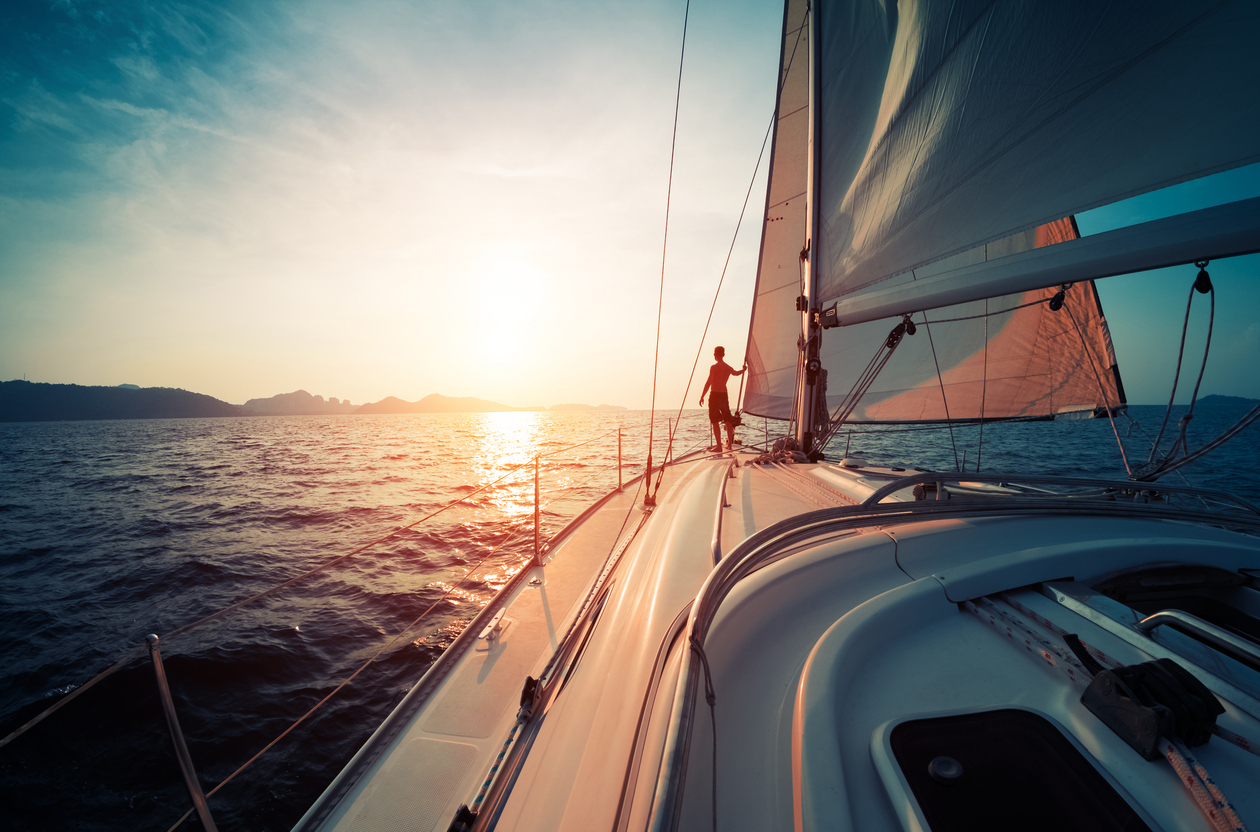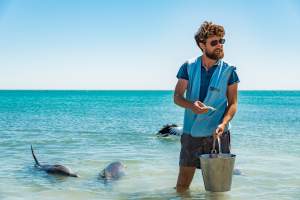
It’s just you. The boat. The wind. The water. No crew. No backup. No one to take the wheel when you’re tired, or fix the problem when something breaks. Solo sailing is not a fantasy of freedom — it’s freedom with teeth. Brutal, beautiful, and absolutely unforgiving.
It’s also one of the last real frontiers of personal challenge. You’re not just navigating currents and weather systems. You’re navigating yourself — your limits, your fears, your competence. Out there, there’s no illusion of control. Only preparation, judgment, and how well you know your boat.
Solo sailing isn’t for everyone. But for those who choose it — even for a few days — it’s a clear mirror. No distractions. No excuses. Just you and the sea.
Here’s what it’s actually like to solo sail, from the daily rhythm to the mental storms, and why it continues to call out to those looking to test what they’re really made of.
Why People Choose to Sail Alone
There’s something deeply elemental about solo sailing. You’re using ancient tools — wind, current, canvas — to move through space on your own terms. No flights, no traffic, no schedules. Just direction and decision.
Some people do it for solitude. Others for the challenge. And some because they’ve been pushed into it — when crew bails, weather shifts, or circumstances demand it. But once you’ve done it, it’s hard to go back. It’s not about proving something. It’s about becoming something — more focused, more capable, more alive.
The Setup: What It Takes to Go Solo
You don’t just untie the lines and head for open water. To sail solo safely, you need:
The Right Boat:
- Size matters. Most solo sailors use boats between 24–40 feet. Big enough to handle seas, small enough to manage lines, sails, and systems without assistance.
- Autopilot or wind vane. Essential for taking breaks, making meals, or adjusting course without leaving the helm.
- Self-tailing winches. Make sail handling much easier when you’re alone.
- Redundant systems. Two GPS units. Multiple radios. Backup everything.
The Right Skills:
- Navigation. GPS is great — until it’s not. Know your charts.
- Sail handling. You need to reef, tack, and gybe solo — in heavy weather, in the dark, without panic.
- Anchoring and docking. These are high-stress moments without crew.
- Maintenance. Anything can and will break. Know how to fix the critical stuff.
The Right Mindset:
- Calm under pressure.
- High situational awareness.
- Ability to push through fatigue without cutting corners.
- Comfort with silence.
The Daily Rhythm at Sea
Solo sailing has a flow to it — simple but all-consuming. Every day is shaped by weather, position, and your own endurance.
Morning:
- Check nav systems and weather reports.
- Make coffee, inspect rigging, check bilge.
- Adjust sail trim, course, or reef as needed.
Midday:
- Eat, hydrate, monitor systems.
- Read, journal, repair gear.
- Make a new position report or log entry.
Afternoon:
- Watch clouds. Adjust again. Maybe catch some sleep — 15-minute power naps if offshore.
- Fish, if you’re lucky and the sea is kind.
Evening:
- Cook simply: rice, pasta, canned goods.
- Double-check everything: sails, lines, nav lights.
- Brace for a rough night or savor a calm one.
It’s a quiet intensity. You’re always “on,” even when you’re still.
The Psychological Terrain
This is where solo sailing goes from a sport to a crucible.
The Highs:
- The moment when the wind fills your sails and everything just clicks.
- Bioluminescence trailing in the dark.
- Sunrise after a brutal night at sea.
- The raw pride of fixing something under pressure.
The Lows:
- Hours of nothing but wind and noise — and your thoughts.
- Doubts. “Should I have come out here alone?”
- Gear failure at 2 AM, with no one to help.
- Fatigue so deep you hallucinate — and still have to stay sharp.
The Shift:
After a few days, something cracks open. You stop checking your phone (or stop noticing it doesn’t work). You talk to the ocean out loud. You trust yourself — not from ego, but from repetition. You start to feel small in the best way. Like you’ve dropped into the real world, where everything matters and nothing is wasted.
Where to Try It (Safely)
You don’t have to cross the Atlantic to test yourself. Here are some incredible — and manageable — solo sailing grounds:
- British Virgin Islands (BVI): Gentle winds, short hops, plenty of safe harbors. Perfect for first-timers.
- Pacific Northwest, USA: Puget Sound and San Juan Islands offer complex tides, quiet anchorages, and real skill-building.
- Whitsunday Islands, Australia: Warm, blue, forgiving — great for solo cruising and reef snorkeling on your downtime.
- Greek Islands: Predictable weather in summer, well-marked harbors, and plenty of company if you want it.
- The Baltic Sea: Unique cultural ports, flat seas, and long summer daylight — ideal for calm solo exploration.
Solo Sailing Misconceptions
- It’s dangerous. Not inherently. Poor planning is dangerous. Solo sailing done right is incredibly safe.
- It’s lonely. Sometimes. But often, it’s clarifying.
- It’s only for experts. You do need competence, but you can train into it. Many solo sailors start small.
- It’s escapism. No — it’s immersion. There’s nowhere to escape to when you’re already in the thick of it.
The Gear You Don’t Want to Forget
- Harness and tether. Always clip in at night or in rough seas.
- EPIRB or satellite communicator. Your lifeline if something goes wrong.
- Headlamp with red light. Essential for night work.
- Manual backup tools. Sextant, paper charts, mechanical compass.
- Dry bags with essentials. One ditch bag, always packed and reachable.
The Aftermath: Coming Back to Shore
Coming back is strange. You step onto land and everything feels loud. People talk fast. You suddenly have choices again — dozens, all at once. It’s overwhelming and wonderful and a little sad.
You miss the silence. You miss being self-contained, tuned in to something bigger than yourself. But you also carry that with you. A bit more patience. A sharper sense of what matters. A quiet pride that no one else needs to see or validate.
You sailed — alone. That doesn’t go away.
Solo sailing is not about solitude for the sake of being alone. It’s about responsibility — for yourself, your vessel, and every decision you make between departure and return. It’s a test of your preparation, your mindset, and your ability to stay steady in chaos.
And in that crucible, you find clarity. Confidence. Maybe even peace.
It’s not easy. It’s not glamorous. But if you want the kind of travel that strips away distraction and shows you who you really are — this is it.







